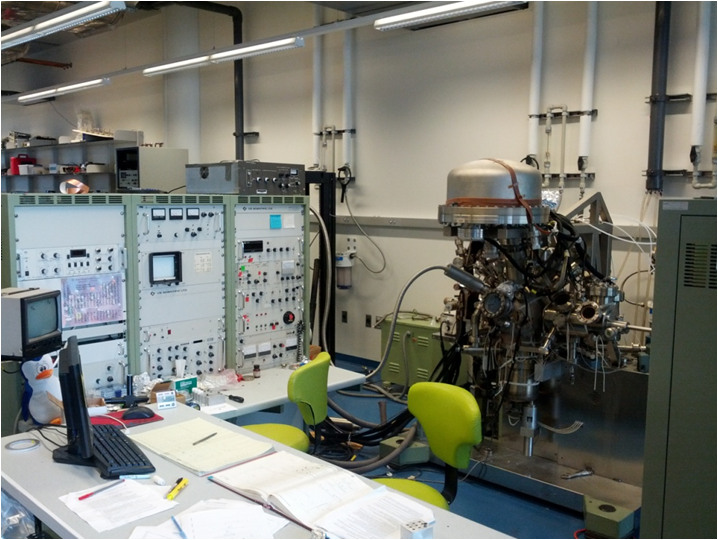
| Electron Spectroscopy for Chemical Analysis (ESCA) or X-ray Photoelectron Spectroscopy (XPS) is one of the most widely used methods for surface science studies. XPS/ESCA provides information about the kinetic energy of excited electrons which are emitted when the surface under study is exposed to soft X-rays. Two types of electrons can be identified, namely core and valence electrons. Using the formula Ek = hv - EB - W0 to determine the distribution of binding energies of the electrons, we can find the chemical composition, and chemical states of the elements present in the top few atomic layers (surface up to 100Å) of the material. Another potential application of the technique is depth profiling which can be either destructive (sputtering of the sample) or non-destructive (angle resolved studies). The Bernasek laboratory is equipped with a VG Scientific ESCALAB MKII spectrometer capable of doing all of the above with a line spread of as low as 1.1eV and a spatial resolution of 100 µm. The instrument has also been retroactively fitted with both a helium discharge lamp for performing Ultraviolet Photoelectron Spectroscopy (UPS), which allows for a more detailed look at the valence structure of materials, and a stage that allows for heating and cooling, ranging between -173C and 800C, in order to study the adsorption and kinetics of gases on a substrate. Some of the main features of the instrument include: |  |